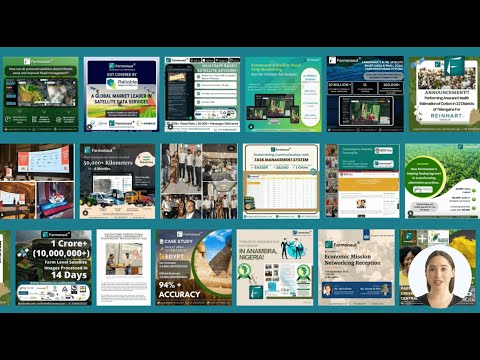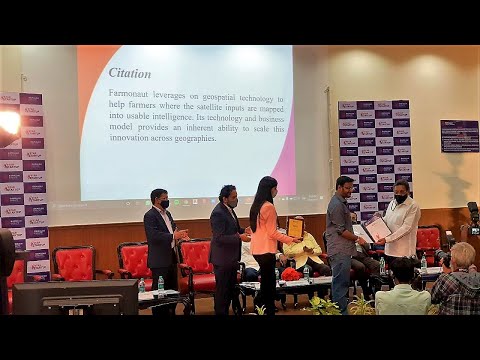Empowering Women in Montana’s Forestry: Breaking Barriers and Cultivating Sustainable Leadership
In the rugged landscapes of Montana, a quiet revolution is taking place. Women are breaking barriers and cultivating sustainable leadership in the traditionally male-dominated field of forestry. As we explore this transformative journey, we’ll discover inspiring forestry career opportunities, innovative approaches to natural resources management, and the power of supportive networks in shaping the future of Montana’s thriving outdoor industry.

“Montana’s forestry sector has seen a 30% increase in female leadership roles over the past decade.”
From wildland firefighting careers to sustainable forest management, women are paving the way for future generations in Montana’s forestry sector. In this comprehensive blog post, we’ll explore the challenges, triumphs, and diverse opportunities available to women in various forestry fields. We’ll also examine how forestry degree programs are empowering students to take on leadership roles in conservation education and timber industry jobs.
The Changing Landscape of Forestry in Montana
Montana’s forests have long been a vital part of the state’s economy and ecological health. However, the face of forestry is changing. Women are increasingly taking on roles that were once considered exclusively male domains. This shift is not just about gender equality; it’s about bringing diverse perspectives and skills to address the complex challenges facing our forests today.
At the University of Montana’s W.A. Franke College of Forestry and Conservation, we’re witnessing this transformation firsthand. Beth Dodson, a professor and department head of the forestry degree program, shares her experience:
“When I was in my master’s program or going to conferences, I would notice that I was the only woman in the room. But it didn’t really hit me until I was a (teaching assistant) for a course and a female student came up to me and said, ‘Thank you so much. Before you, I had no idea what I would do in this field.’ And this floored me. Because there’s nothing in this field that has anything to do with gender.”
This anecdote highlights the importance of representation and mentorship in encouraging more women to pursue forestry careers. It’s not just about breaking into the field; it’s about thriving and leading within it.
Forestry Career Opportunities for Women in Montana
The forestry sector in Montana offers a wide range of career paths for women. From hands-on field work to research and policy-making, there’s a place for every skill set and interest. Let’s explore some of the exciting opportunities available:
- Wildland Firefighting: Women are making significant strides in this physically demanding and crucial role.
- Forest Management: Overseeing the health and sustainability of Montana’s vast forests.
- Conservation Education: Inspiring the next generation to care for our natural resources.
- Environmental Planning: Ensuring responsible development and conservation of forested areas.
- Timber Industry: From harvesting to processing, women are taking on leadership roles in this vital economic sector.
These diverse roles contribute to the overall health of Montana’s forests and communities. By bringing fresh perspectives and innovative approaches, women are helping to shape a more sustainable future for the state’s natural resources.
Breaking Barriers: Women in Wildland Firefighting
“Women now comprise 25% of wildland firefighting crews in Montana, up from just 5% in 2000.”
One of the most physically demanding and high-stakes careers in forestry is wildland firefighting. Traditionally a male-dominated field, women are now making significant inroads. Cindy Super, a University of Montana alumna, shares her journey:
“I was lucky enough as part of my student military training to be sent to airborne school where they teach you how to jump out of planes and land. That was the most fun thing I’d ever done in my life.”
This experience inspired Super to apply to be a smokejumper, a highly trained wildland firefighter who parachutes into remote areas. She fought fire with the Missoula Smokejumpers while in school before leaving for active duty. Her story is a testament to the courage and determination of women entering this challenging field.
For those interested in wildland firefighting careers, it’s essential to understand the physical and mental demands of the job. Training programs often include:
- Intensive physical fitness regimens
- Wilderness survival skills
- Fire behavior and suppression techniques
- Emergency medical training
These skills not only prepare firefighters for their critical role in protecting forests and communities but also build a strong foundation for leadership in the broader field of forestry.
Sustainable Forest Management: A Growing Field for Women
Sustainable forest management is at the heart of modern forestry practices, and women are playing an increasingly important role in this field. This area of expertise combines ecological knowledge with practical management skills to ensure the long-term health and productivity of forest ecosystems.
Sarah Lyngholm, another University of Montana alumna, has built a successful career in this area. After obtaining her bachelor’s and master’s degrees in forestry, she joined the Department of Natural Resources and Conservation (DNRC), where she’s worked in timber sales and environmental planning for 20 years.
Lyngholm now serves as a program specialist for the DNRC’s Good Neighbor Authority, which supports partnerships between state and federal land management agencies. Her work exemplifies the collaborative and innovative approaches needed in sustainable forest management.
Key aspects of sustainable forest management include:
- Balancing timber production with ecosystem health
- Implementing conservation strategies
- Adapting to climate change impacts
- Engaging with local communities and stakeholders
Women in this field are not only contributing to the health of our forests but also to the economic vitality of Montana’s rural communities.
Forestry Degree Programs: Empowering the Next Generation
Education plays a crucial role in preparing the next generation of forestry professionals. Forestry degree programs, like those offered at the University of Montana, are increasingly focused on providing students with a well-rounded education that combines traditional forestry skills with cutting-edge technology and sustainable practices.
These programs are also working to create a more inclusive environment for women. Professor Beth Dodson makes a deliberate effort to bring female forestry professionals into her classroom, providing role models for both female and male students.
Key components of modern forestry degree programs include:
- Ecosystem management and conservation biology
- Geographic Information Systems (GIS) and remote sensing
- Forest economics and policy
- Climate change adaptation strategies
- Hands-on field experience
By equipping students with these diverse skills, forestry programs are preparing graduates to take on leadership roles in various sectors of the industry.

The Power of Mentorship and Supportive Networks
One of the most powerful tools for empowering women in forestry is the creation of supportive networks and mentorship programs. These connections provide guidance, encouragement, and practical advice for navigating a traditionally male-dominated field.
The “Best Hunting Trip Ever” (BHTE), an annual all-women outdoor excursion organized by Beth Dodson and her colleagues, is a prime example of how these networks can form and flourish. This tradition, now in its 15th year, has become more than just a hunting trip; it’s a way for women in forestry to build camaraderie, share experiences, and support one another in their professional journeys.
Amy Helena, who became friends with Super and Lyngholm later in their careers, emphasizes the importance of these connections:
“Because of them, I know that I always have a lifeline. This support system has been invaluable to me. I hope everyone finds a group like we have.”
Mentorship programs, both formal and informal, can provide:
- Career guidance and advice
- Networking opportunities
- Emotional support and encouragement
- Skill development and knowledge sharing
By fostering these supportive networks, we can help ensure that more women not only enter the field of forestry but thrive and take on leadership roles within it.
Challenges and Triumphs: Personal Stories from the Field
The journey of women in forestry is marked by both challenges and triumphs. While progress has been made, there are still obstacles to overcome. Many women in the field have shared experiences of feeling the need to work harder to prove themselves or navigate workplace cultures that are still adapting to increased diversity.
Amy Helena, now a unit manager at the DNRC, reflects on her experience:
“I’ve had very few times where I felt like my being a woman was the reason for something. But you feel like you have to work harder because of it. That’s something you have to work through internally all the time.”
Despite these challenges, the stories of women in Montana’s forestry sector are overwhelmingly ones of triumph. They speak of resilience, innovation, and a deep commitment to the health of our forests and communities.
Some key triumphs include:
- Increasing representation in leadership roles
- Pioneering new approaches to sustainable forest management
- Inspiring and mentoring the next generation of forestry professionals
- Contributing to policy changes that promote diversity and inclusion in the field
These personal stories not only inspire other women to pursue careers in forestry but also demonstrate the valuable perspectives and skills that diversity brings to the field.
The Future of Women in Montana’s Forestry Sector
As we look to the future, the outlook for women in Montana’s forestry sector is bright. The increasing diversity in the field is bringing new ideas, approaches, and energy to address the complex challenges facing our forests in the 21st century.
Some key trends and opportunities include:
- Increased focus on sustainable and climate-adaptive forest management practices
- Integration of advanced technologies like remote sensing and AI in forestry operations
- Growing emphasis on community engagement and collaborative forest management
- Expansion of urban forestry and green infrastructure projects
These trends present exciting opportunities for women to lead and innovate in the field of forestry. As more women enter the profession and take on leadership roles, we can expect to see continued positive changes in workplace culture, policy, and practice.
Embracing Technology in Forestry: The Role of Farmonaut
As the forestry sector evolves, technology is playing an increasingly important role in sustainable forest management. Companies like Farmonaut are at the forefront of this technological revolution, offering innovative solutions that can benefit forestry professionals, including women entering the field.
Farmonaut’s satellite-based farm management solutions, while primarily focused on agriculture, have applications in forestry as well. Their platform provides valuable services such as real-time crop health monitoring, AI-based advisory systems, and resource management tools that can be adapted for forest management.
For example, Farmonaut’s carbon footprinting feature could be particularly useful in forestry, helping managers track and reduce environmental impact in their operations. This aligns with the growing emphasis on sustainable practices in the industry.
Similarly, the fleet management tools offered by Farmonaut could be applied to manage forestry equipment and vehicles more efficiently, potentially reducing operational costs and environmental impact.
While Farmonaut’s primary focus is on agricultural applications, the principles and technologies they employ demonstrate the kind of innovative thinking that is shaping the future of natural resource management, including forestry.
Women in Forestry: Career Pathways and Impact
| Career Path | Educational Requirements | Key Responsibilities | Sustainability Impact | Percentage of Women (Estimated) |
|---|---|---|---|---|
| Wildland Firefighter | High school diploma, specialized training | Fire suppression, prevention, and forest protection | Preserves forest ecosystems, protects communities | 25% |
| Forest Manager | Bachelor’s degree in Forestry or related field | Oversee forest health, timber harvesting, reforestation | Ensures long-term forest sustainability | 30% |
| Conservation Educator | Bachelor’s degree in Environmental Science or Education | Develop and implement educational programs | Raises awareness, promotes conservation ethics | 45% |
| Environmental Planner | Master’s degree in Environmental Planning or related field | Develop land use plans, assess environmental impacts | Balances development with environmental protection | 40% |
| Smokejumper | Extensive firefighting experience, specialized training | Parachute into remote areas to fight wildfires | Protects remote forest areas from devastating fires | 15% |
Conclusion: A Sustainable Future Led by Women in Forestry
The story of women in Montana’s forestry sector is one of perseverance, innovation, and leadership. From the rugged frontlines of wildland firefighting to the strategic planning of sustainable forest management, women are making their mark and shaping the future of this vital industry.
As we’ve explored in this blog post, the increasing presence of women in forestry brings diverse perspectives, new approaches to problem-solving, and a strong commitment to sustainability. The supportive networks and mentorship programs that have emerged are crucial in fostering this positive change and empowering the next generation of female forestry professionals.
The challenges that remain are opportunities for further growth and innovation. As more women enter the field and take on leadership roles, we can expect to see continued positive changes in workplace culture, policy, and practice. This evolution is not just beneficial for women; it strengthens the entire forestry sector and enhances our ability to manage and protect our vital forest resources.
The future of forestry in Montana and beyond is increasingly diverse, technologically advanced, and focused on sustainability. Women are at the forefront of this transformation, breaking barriers, cultivating sustainable leadership, and ensuring that our forests continue to thrive for generations to come.
As we look to the future, it’s clear that the contributions of women in forestry will be crucial in addressing the complex challenges facing our forests and communities. From climate change adaptation to innovative conservation strategies, women are bringing fresh perspectives and determined leadership to the field.
We encourage all aspiring forestry professionals, regardless of gender, to explore the diverse and rewarding career opportunities in this field. The forests of Montana and the world need your passion, skills, and innovative thinking. Together, we can create a more sustainable and inclusive future for forestry.
FAQ Section
1. What educational paths are available for women interested in forestry careers?
Women interested in forestry careers can pursue various educational paths, including:
- Bachelor’s degrees in Forestry, Environmental Science, or Natural Resource Management
- Master’s degrees in specialized areas like Forest Ecology, Conservation Biology, or Environmental Planning
- Vocational training programs for specific roles like wildland firefighting
- Continuing education courses and certifications for professional development
2. What are some of the biggest challenges women face in the forestry industry?
Some challenges women may face in the forestry industry include:
- Underrepresentation in certain roles, especially leadership positions
- Navigating traditionally male-dominated work environments
- Balancing fieldwork demands with family responsibilities
- Overcoming stereotypes and biases about women’s abilities in physical roles
3. How can mentorship programs support women in forestry?
Mentorship programs can support women in forestry by:
- Providing guidance and advice from experienced professionals
- Offering networking opportunities and introductions to key industry contacts
- Sharing strategies for overcoming common challenges in the field
- Inspiring confidence and encouraging career advancement
4. What role does technology play in modern forestry, and how can women leverage it?
Technology plays a significant role in modern forestry through:
- Geographic Information Systems (GIS) for mapping and analysis
- Remote sensing technologies for forest health monitoring
- Data analytics for forest management decision-making
- Automation in timber harvesting and processing
Women can leverage these technologies by gaining expertise in these areas, which can lead to specialized roles and leadership opportunities in the industry.
5. How is climate change affecting forestry practices, and what opportunities does this present for women in the field?
Climate change is significantly impacting forestry practices, necessitating:
- Adaptation strategies for changing forest ecosystems
- Enhanced fire management and prevention techniques
- Research into climate-resilient tree species and planting methods
- Carbon sequestration and forest carbon credit programs
These challenges present opportunities for women to lead in developing innovative solutions and shaping policy in response to climate change impacts on forests.
Explore Farmonaut’s innovative solutions:
Earn With Farmonaut: Affiliate Program
Earn 20% recurring commission with Farmonaut’s affiliate program by sharing your promo code and helping farmers save 10%. Onboard 10 Elite farmers monthly to earn a minimum of $148,000 annually—start now and grow your income!






